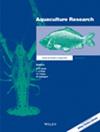Effects of Different Dried Chlorella pyrenoidosa Preparations on Fatty Acid Profiles and Reproductive Outcomes in Daphnia carinata
Abstract
Daphnia carinata is an important biological live feed in aquaculture. Conventionally, D. carinata is cultivated and fed with fresh Chlorella pyrenoidosa, which is inconvenient for storage and transportation. After undergoing vacuum freeze-drying or spray-drying, C. pyrenoidosa exhibits advantages such as reduced weight and easier storage and transport. This study investigated the effects of feeding freeze-dried and spray-dried Chlorella on the reproductive performance and fatty acid composition of D. carinata. The results indicated that there was no significant difference in reproductive performance between the two groups of D. carinata fed with freeze-dried Chlorella and fresh Chlorella. However, a significant decline in reproductive performance was observed in the group fed with spray-dried Chlorella. The contents of crude fat and unsaturated fatty acids in freeze-dried Chlorella were significantly higher than in spray-dried Chlorella. Additionally, D. carinata fed with freeze-dried Chlorella exhibited significantly higher levels of unsaturated fatty acids (especially ALA and EPA) than those fed with spray-dried Chlorella. In conclusion, freeze-dried Chlorella can be used as an alternative to fresh Chlorella for cultivating D. carinata. Unsaturated fatty acids are a key factor influencing the reproductive performance of D. carinata.


 求助内容:
求助内容: 应助结果提醒方式:
应助结果提醒方式:


